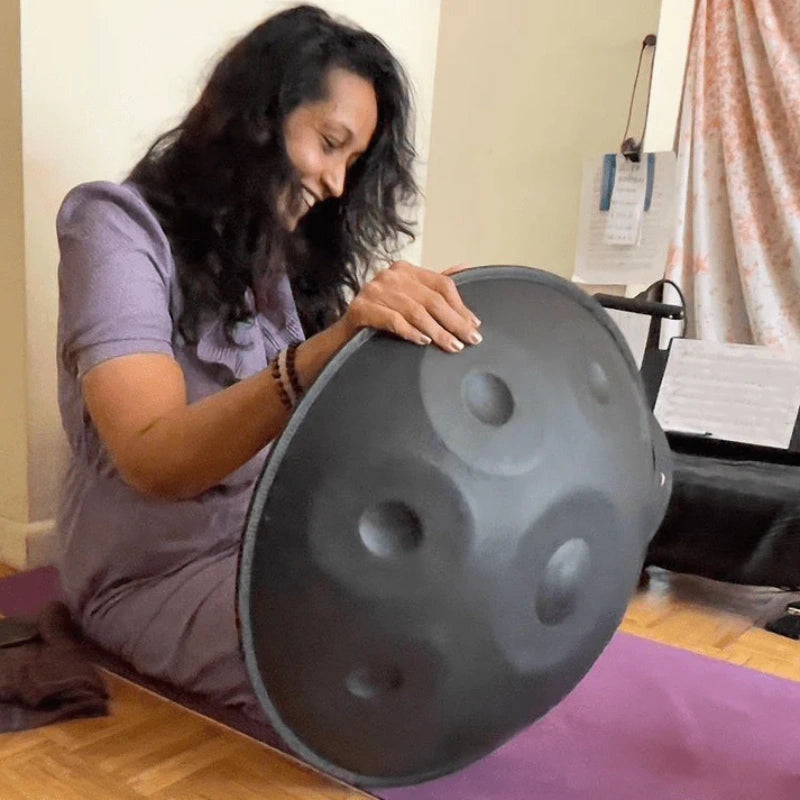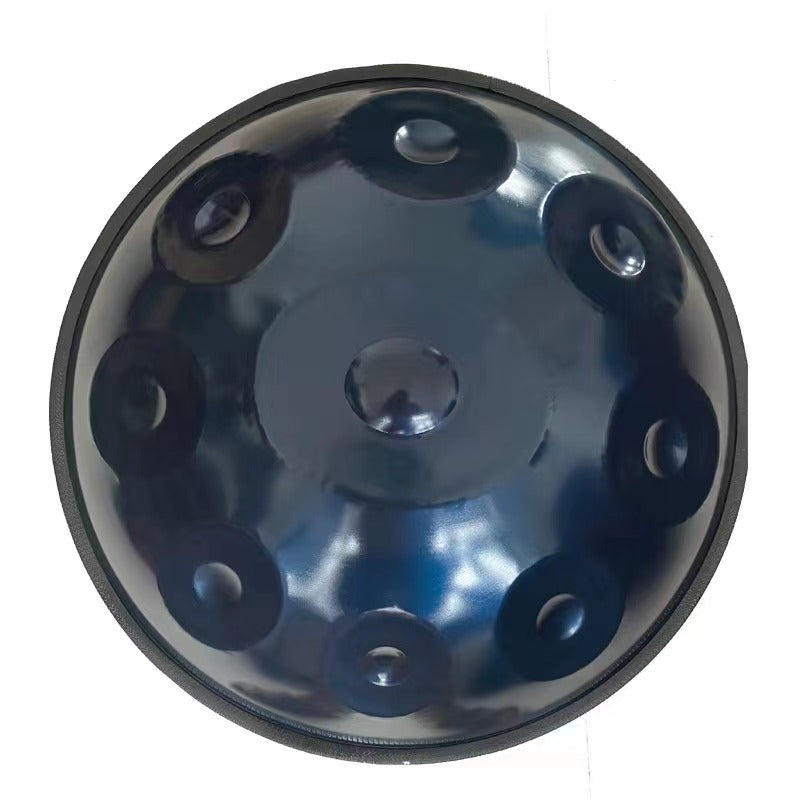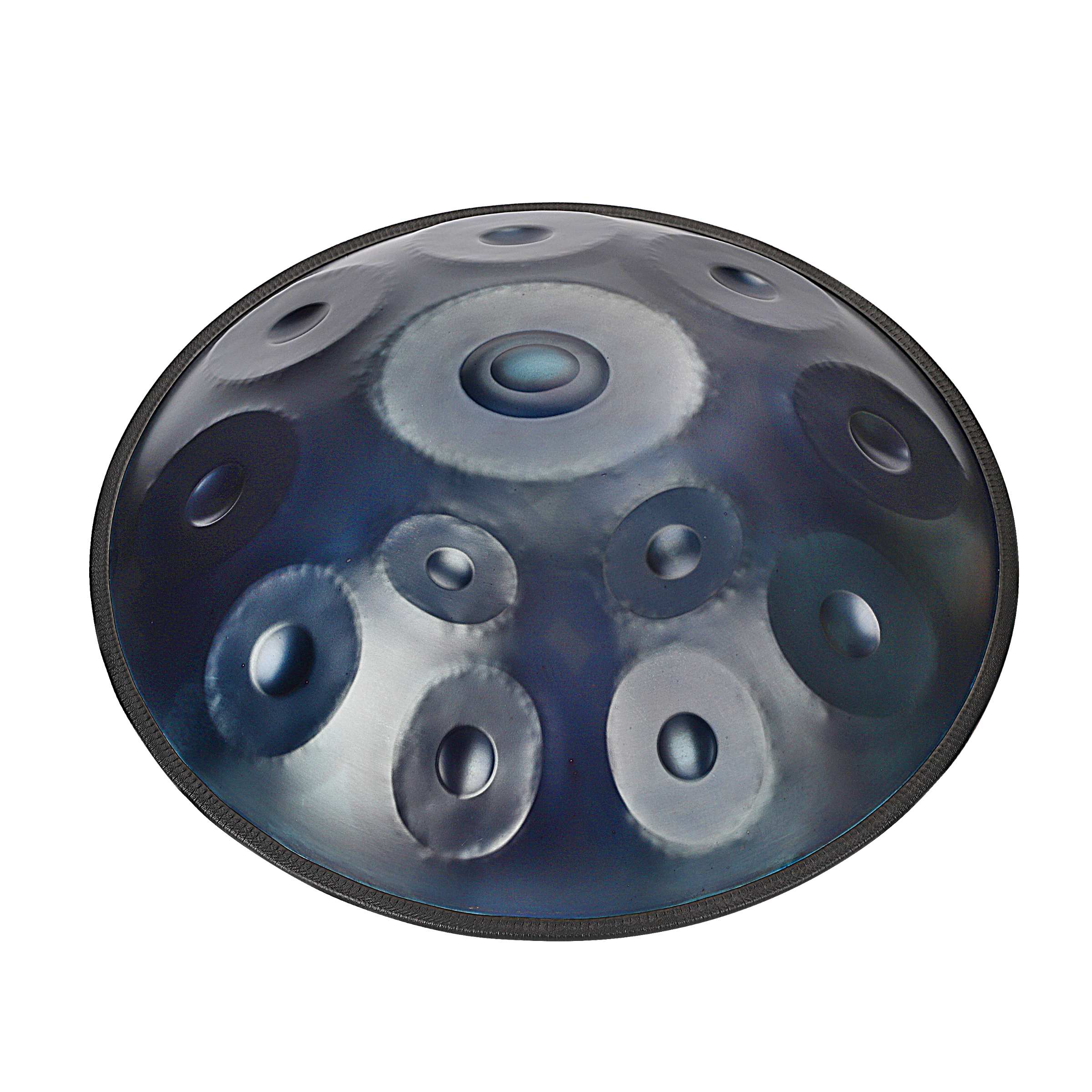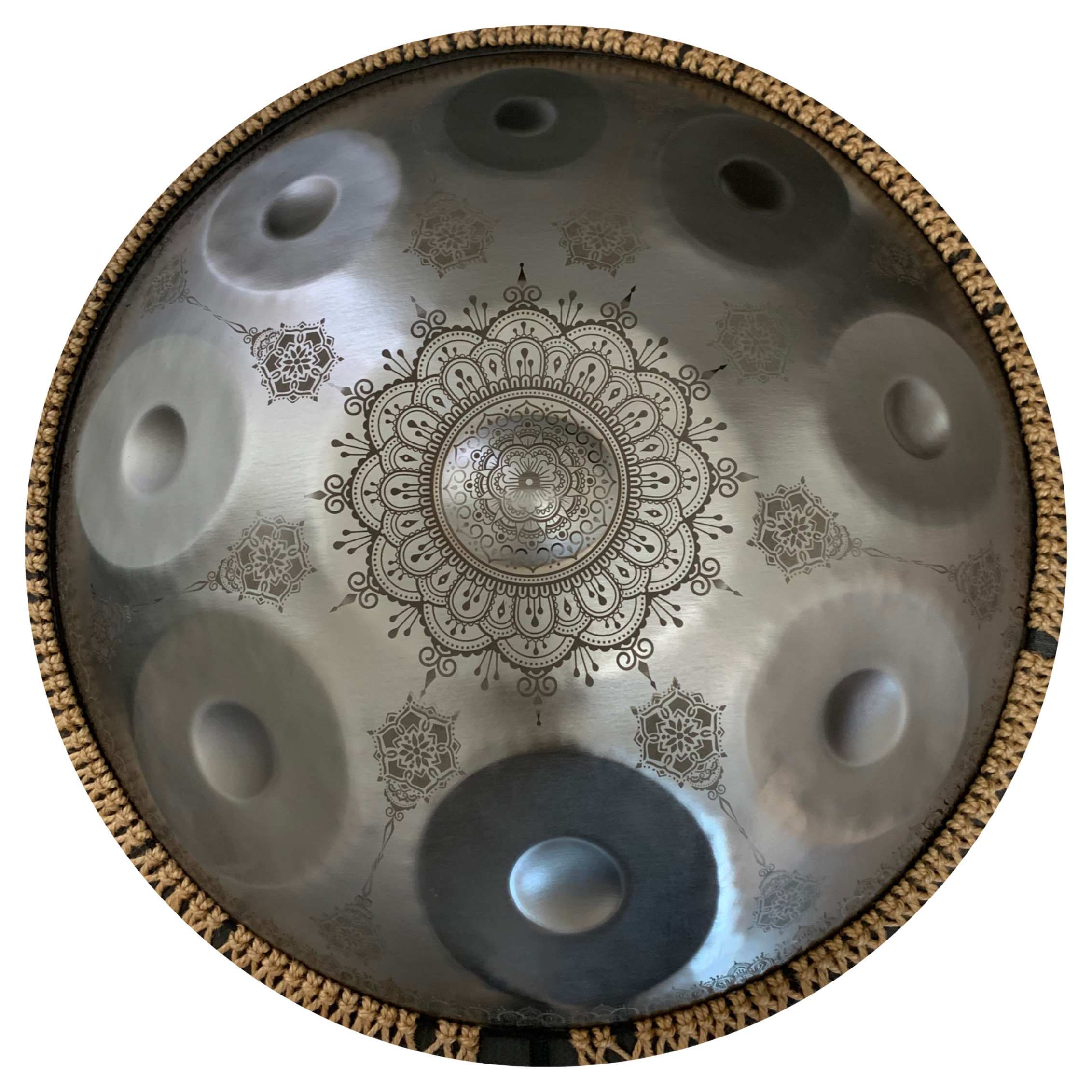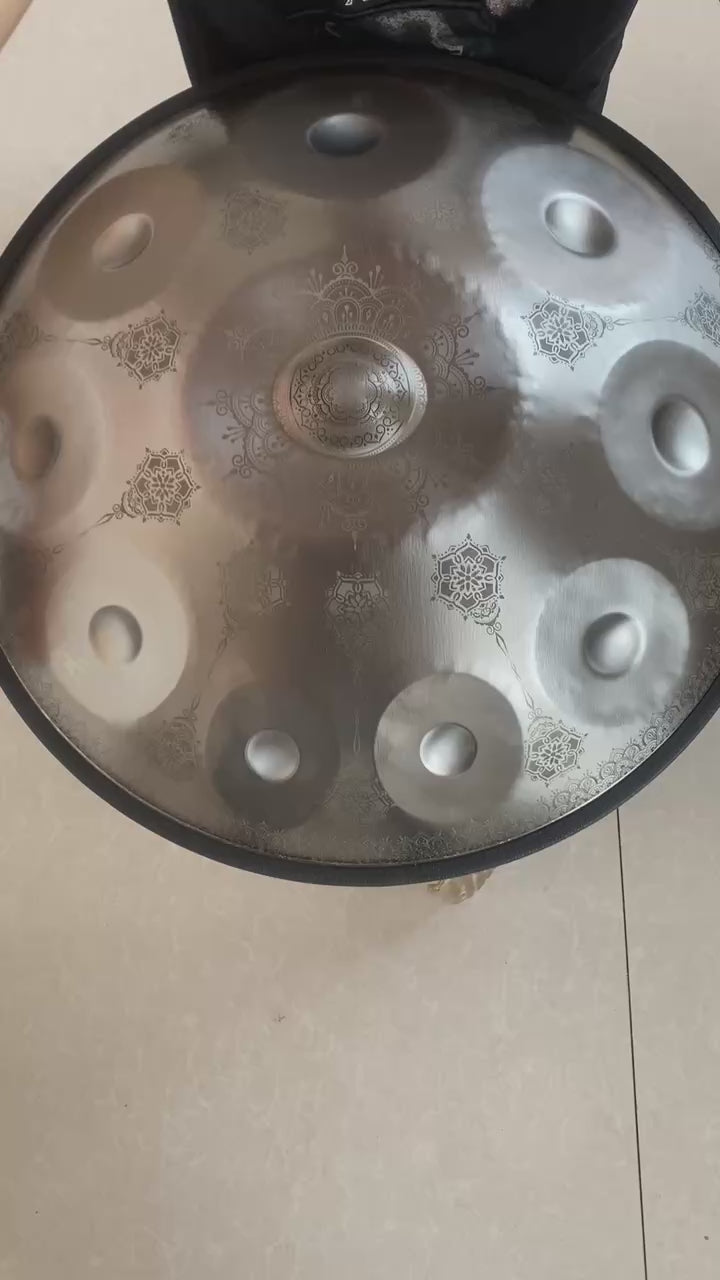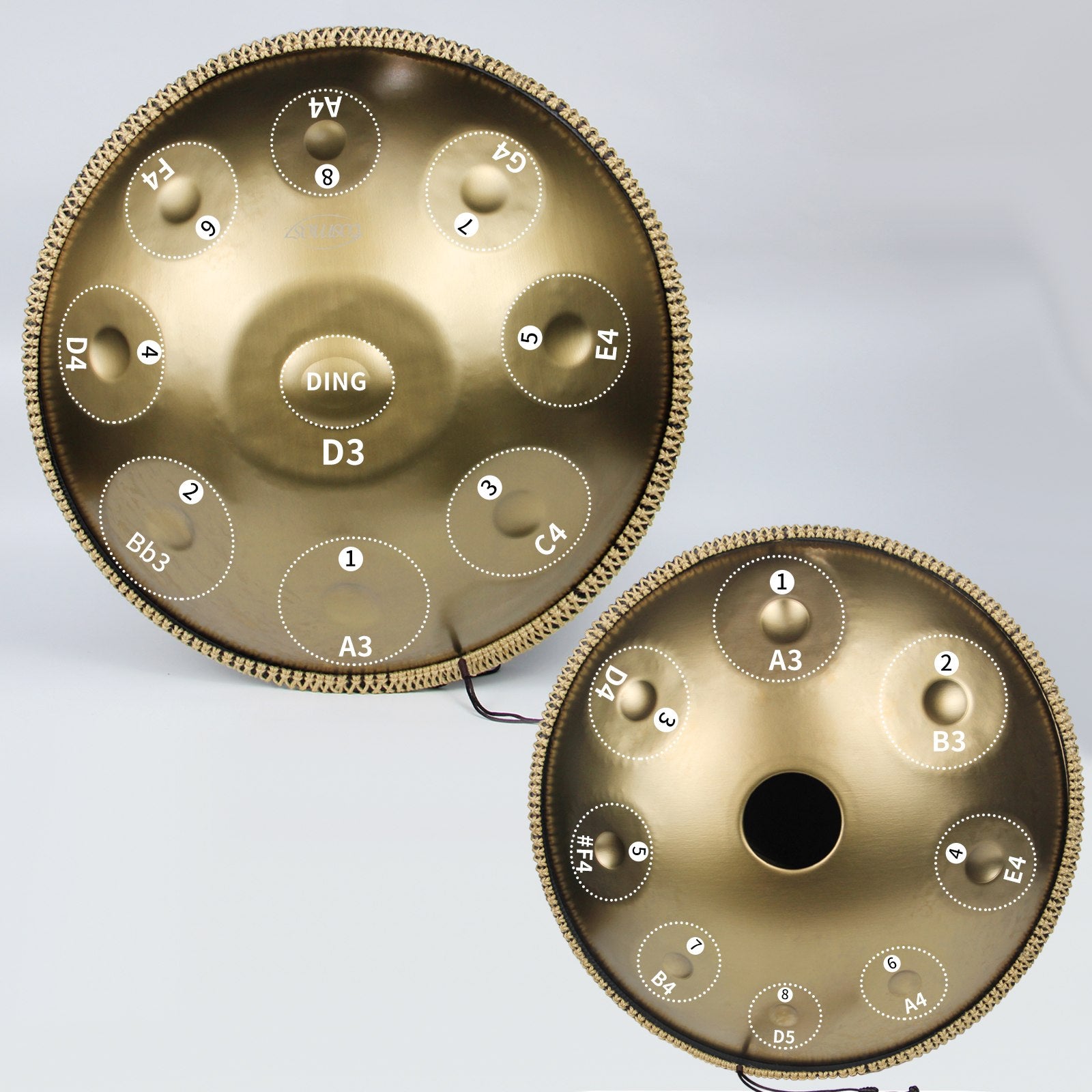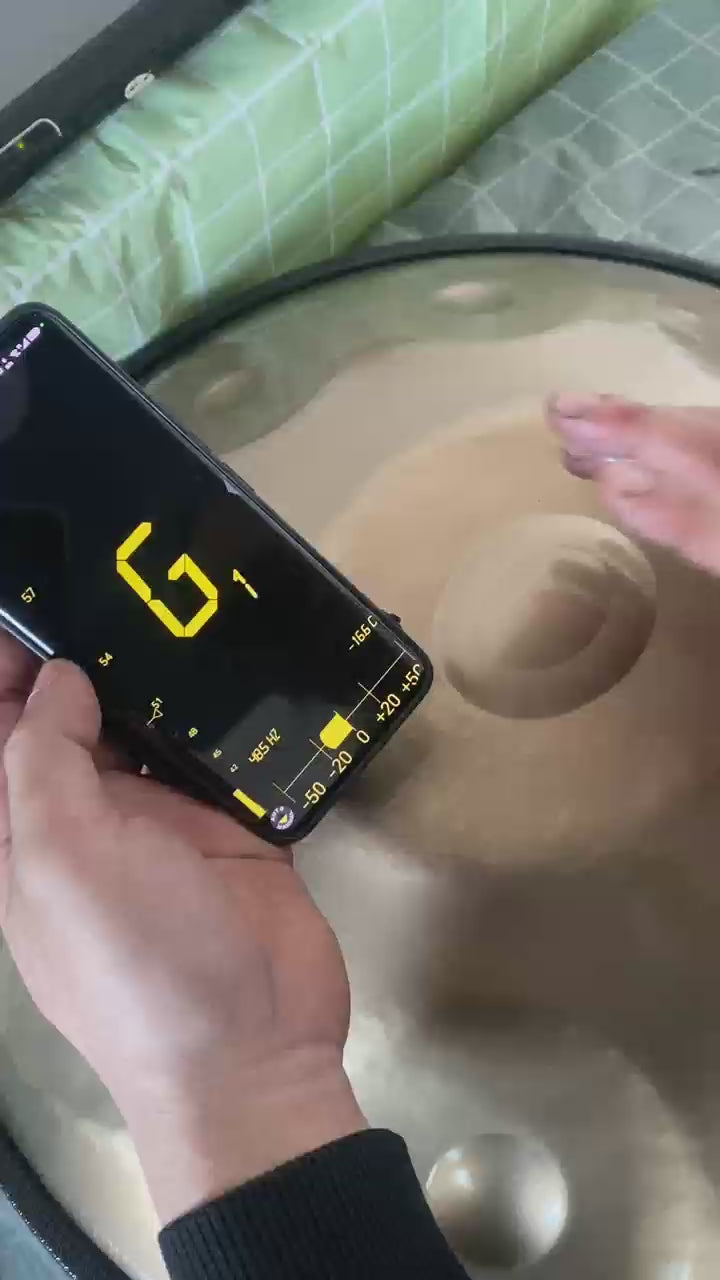Parmi les différentes catégories d'instruments de percussion, il y a souvent matière à discussion, notamment lorsqu'il s'agit de comparer le handpan et le hang drum. Aussi synonymes de leurs tonalités mélodieuses et de la qualité méditative de la musique qu'ils génèrent, ces instruments présentent néanmoins une différence abyssale en termes de technique ! Connaître les détails complexes du handpan et du hang drum — spécialement apaisés ; ou d'où ils viennent aide les fans à apprécier leurs instruments tout en prenant des décisions éclairées pour de futurs joueurs potentiels. Notre discussion ce mois-ci approfondit le sujet du handpan contre le hang drum et examine une histoire chargée d'idiosyncrasies liées au patrimoine culturel, à l'innovation acoustique et à l'évolution de l'expression musicale.

Cet article est entièrement consacré à l'exploration des divers contextes historiques et culturels dans lesquels l'instrument handpan ou le hang drum a introduit certains jalons tout au long de son parcours. Il parcourra les nuances entre le handpan et le hang drum en termes de design et de production, jusqu'à ces petites idiosyncrasies qui ont un impact sur la façon dont ils se jouent, ainsi que sur leur son. De plus, nous examinerons les disparités acoustiques qui composent la voix de chaque instrument, nous permettant de comprendre leur utilisation à travers plusieurs genres de compositions musicales et de performances. Après cela, les lecteurs sauront tout ce qu'il y a à savoir sur le handpan et le hang drum, et seront capables de reconnaître en quoi ils se ressemblent et ce qui les distingue l'un de l'autre.
Contexte culturel et historique
Le handpan et son prédécesseur, le hang drum, ont tous deux une profonde histoire mondiale s'étendant sur des continents et des décennies. Ils ont été inventés au début des années 2000 à Berne, en Suisse, et sont une marque déposée : Felix Rohner et Sabina Schärer sont les fondateurs de PANArt (PANart Hang Manufacturing Ltd).
Origine et Évolution
Né de cela et s'inspirant d'un duo improbable, le tambour en acier trinidadien aux côtés du gamelan indonésien ; les compétences de Rohner en métallurgie ont été associées à l'art de Shärer pour la création musicale afin de créer un instrument de percussion véritablement original, fabriqué à la main avec amour. Le mot "Hang" vient du terme bernois allemand pang, un terme général suisse pour la main.
Le Hang a commencé comme un instrument de niche dont PANArt était le seul fabricant. Par la suite, alors que ses timbres alchimiques et son attrait cultuel devenaient bien connus, d'autres entreprises ont commencé à fabriquer leurs propres versions sous le nom de "handpan", submergées par la demande mondiale.
Impact culturel
À la fois le handpan et son prédécesseur spirituel, le hang drum, ont transcendé leurs racines pour devenir des phénomènes mondiaux qui inspirent tous les types de joueurs, des musiciens improvisant avec eux dans des salles de concert aux soi-disant guérisseurs sonores utilisant leurs tonalités apaisantes à des fins thérapeutiques. Leurs mélodies hypnotiques et leurs timbres éthérés ont également contribué à faire naître une communauté de joueurs, d'ateliers et de festivals à travers la planète Terre.
Son son distinctif a été entendu dans une large gamme de genres allant de la musique ambiante ou du monde à la méditation et à la thérapie par le son.
Aujourd'hui, les plateformes en ligne sont responsables de la sensibilisation et de la connexion des amateurs de handpan dans le monde entier via les réseaux sociaux.
À travers des amitiés partagées et un amour mutuel pour le handpan, un sentiment d'acceptation a créé une niche unique au sein d'un cercle en constante expansion.
Portée mondiale
La clé de l'acceptation généralisée du handpan dans la performance de musique du monde semble être étroitement liée à son attrait pour les jeunes et à sa facilité d'utilisation, bien que son utilisation reste fortement concentrée en Europe et en Amérique du Nord.
Avec la fascination du monde pour ces types d'instruments comme le handpan et le hang drum qui ne cesse de croître, nous sommes impatients de voir comment leur influence culturelle s'étendra encore au-delà des frontières nationales alors qu'ils évoluent d'artefacts musicaux à quelque chose de plus avant-gardiste mais organique ; unissant finalement les gens à travers les barrières géographiques avec sa voix universelle dans la musique.
Différences physiques
Apparence Le handpan et le hang drum se ressemblent quelque peu, mais ils présentent également des différences qui les séparent l'un de l'autre. Ils diffèrent en termes de matériaux ainsi que des méthodes de fabrication ; les changements de design et la durabilité aussi.
Matériaux et Fabrication
Crédit : Shutterstock Le hang drum, tel qu'il a été initialement fabriqué par PANArt en Suisse, a sa propre forme unique en métal en forme d'OVNI avec un dôme central entouré de huit à neuf champs de tonalité sur la surface supérieure. Fabriqué en acier conçu sur mesure, il est fait pour produire un son chaud et bien résonner grâce à la forme spéciale de sa lame qui est formée dans des circonstances uniques.
Alternativement, le handpan est un terme générique qui englobe des classes d'instruments dérivant/inspirés par le hang drum. Le hang drum est un instrument unique fabriqué par la société suisse PANArt, tandis que les handpans sont une catégorie générale d'instruments similaires provenant de divers fabricants à travers le monde. Ils peuvent être fabriqués à partir de différents matériaux comme le métal, le titane ou même le bois, donc les sons et les résonances varient.
Variations de conception
Bien que le hang drum ait un look très unique de soucoupe volante, des handpans sont également disponibles sous différentes formes. Alors que d'autres handpans reproduisent le design d'un hang drum, certains présentent leurs propres formes uniques telles que des formes sphériques ou coniques. Le nombre de champs de tonalité peut également varier, beaucoup ayant plus ou moins que les huit à neuf que l'on trouve sur un hang drum traditionnel.
Durabilité
La durabilité des hang drums et des handpans diffère considérablement en raison des matériaux utilisés et de leur mode de production. Le hang drum, construit à partir d'un alliage d'acier propriétaire et bien qu'il soit relativement fragile, est tout de même capable de se bosseler ou de se déformer lorsqu'il est tombé dans de telles conditions. Ces bosses interfèrent avec l'accord de cet instrument et la qualité du son en général.
Avec les handpans, en attendant, leur résistance à long terme variera en fonction du type de matériaux dont ils sont fabriqués. Les handpans fabriqués à partir de matériaux plus durs (par exemple, le titane) sont moins susceptibles de se bosseler ou d'être affectés par les éléments, tandis que les handpans produits à partir de métaux plus doux et/ou de bois peuvent être plus sensibles à des dommages environnementaux.
Les hang drums et les handpans nécessitent tous deux de l'attention en matière d'entretien, car ils peuvent se désaccorder à long terme. Opter pour un instrument de musique d'occasion est délicat, car il a pu subir dans le passé des impacts accidentels ou un mauvais entretien, ce qui peut altérer les notes et nuire au son général.
Différences acoustiques
Chacune de ces différences dans l'acoustique qui distingue un handpan d'un hang drum rend le son de chacun exceptionnellement unique. Dans chacun de ces domaines, leurs profils sonores présentent des traits différents et jouent des rôles assez disparates dans de nombreux types de musique.
Profil sonore
Le hang drum, une invention des frères PANArt, se distingue par sa note ding unique provenant du dôme central et par des ensembles de tons mélodiques qui surgissent à travers les champs de tonalité. Les hang drums ont des champs de tonalité de réglage variable, selon les notes utilisées dans leur construction - certaines échelles de hang drum courantes incluent Gong Diao, Hijaz Madenati et Raga Desh.
En comparaison, les handpans sont une famille d'instruments à souffler sur le côté, avec différentes techniques de fabrication et matériaux, ce qui leur permet de produire des profils sonores plus diversifiés. Bien que certains handpans imitent le ton d'un hang drum, d'autres présentent des différences subtiles en termes de sustain et d'harmoniques - offrant un niveau de complexité harmonique accru. Les handpans peuvent être fabriqués en utilisant diverses échelles de tuning, allant des échelles occidentales traditionnelles aux tunings orientaux plus exotiques et sur mesure.
Style de jeu
Les deux instruments sont joués par des mains frappant ou caressant les champs de tonalité, mais les techniques varient. La forme du hang drum s'élargit et a un agencement où les notes viennent en cordes qui rendent possibles des motifs fluides et glissants, vous permettant de passer d'une note à l'autre sans hésitation.
Les différentes harmoniques, pour l'amour du ciel. Les handpans se présentent sous toutes sortes de formes et de configurations de champs tonals qui peuvent nécessiter des techniques de frappe/tapotement plus assidues. Alors que la manière dont les Hang Drums ont conquis la plupart des marchés mondiaux, certains handpans acceptent un style de jeu plus mélodique basé sur leur technique ; d'autres se prêtent à être des instruments de percussion, tout dépend de leur conception.
Tous les types d'applications
Le handpan et le hang drum ont été intégrés dans différents styles musicaux, apportant leur charme individuel aux compositions.
Probablement la musique la plus courante pour laquelle elle serait utilisée, avec son ton esthétiquement plaisant et relaxant, les deux harpes ont été bien utilisées dans la musique ambiante/new age qui est généralement accordée à 432hz et qui se spécialise dans le son de relaxation/méditation/guérison.
Musique du monde : Le handpan peut également jouer avec de nombreuses gammes, ce qui le rend très attrayant dans ce sens, car vous pouvez vraiment intégrer l'instrument dans certaines musiques traditionnelles du monde entier.
Contemporain & Expérimental : Des musiciens ont expérimenté le handpan et le hang drum dans des sons contemporains, tandis que d'autres ont élargi les possibilités de ces deux instruments pour créer leurs propres domaines expérimentaux.
Bandes sonores de films et de jeux vidéo : Les sons éthérés et inquiétants de ces instruments en ont fait un choix populaire pour les bandes sonores de films/jeux vidéo afin d'ajouter de la profondeur ou un caractère surnaturel aux expériences cinématographiques/interactives.
Bien que le handpan et le hang drum aient des similitudes acoustiques, leurs modalités uniques de création de sons diffèrent l'une de l'autre, offrant différents genres dans lesquels les utiliser pour leur son divers qui les rend captivants.
Conclusion
Alors que notre quête pour naviguer dans les nuances minutieuses et les parallèles heureux par lesquels nous pouvons délimiter deux instruments apparemment apparentés tout au long de l'histoire ancienne du handpan vs hang drum : origines, ramifications culturelles et traits physiques/acoustiques inhérents. Cette exploration a révélé plus que le contexte, le savoir-faire et la variété des possibilités musicales de chaque instrument ; elle souligne en outre leur pouvoir unique de franchir des frontières - à travers le temps et l'espace, créant des ponts culturels ou simplement un esprit communautaire qui transcende les barrières linguistiques. Une telle profondeur de connaissance fait de la distinction non pas simplement une différence entre deux types, mais pointe davantage vers une reconnaissance et une appréciation de ce que chacun peut apporter aux domaines de la guérison musicale.
Mais l'importance de leur jeu de cet instrument transcende la création musicale - ils l'utilisent comme un outil pour relier des communautés et des mondes à travers le langage universel du rythme et de la mélodie. Leur progression jusqu'à ce point a reflété une histoire plus vaste d'innovation, de tradition et de quête d'une perfection sonore toujours plus grande. Il existe de plus en plus de possibilités de franchir des frontières pour les musiciens, les auditeurs et les explorateurs culturels, leur permettant d'explorer davantage ces instruments remarquables et de continuer à découvrir les nouvelles plateformes qui s'ouvrent à eux à l'échelle mondiale. Une plateforme qui appelle un avenir où les paysages tonals captivants du handpan et du hang drum restent une source d'inspiration, un conduit pour la guérison, unissant des communautés autour de la planète.
FAQ
- Qu'est-ce qui rend les handpans si différents des hang drums ?
La différence réside dans le branding et les termes. Le nom propriétaire de Page commence par "Hang", inventé par ses fabricants d'origine. Bien que "Hang Drum" soit très souvent utilisé, il pourrait être plus précis d'appeler les instruments produits par PanArt "Hang", le terme général pour ce type d'instrument serait probablement "handpan".
- La taille d'un tambour de réservoir par rapport à ceux avec les handpans.
Les handpans sont beaucoup plus grands que les tambours de réservoir. Cette variation de taille est cruciale car les membranes de handpan nécessitent une plus grande surface pour produire un son de qualité avec une haute réactivité.
- Quel est l'instrument similaire au hang drum ?
RAV Drum (instrument similaire au hang drum) Un mélange de genèse musicale - ce tambour de percussion mélodique a été originaire de Russie et conçu par un ingénieur Andrey Remyannikov. Il a la forme convexe qui est typique des handpans.
- Alors pourquoi s'appelle-t-il un "hang drum" ?
Le terme "Hang" vient d'un mot allemand bernois qui se traduirait également par main et colline, ce qui pourrait être lié à la forme ronde de cet instrument. "Hang" est une marque déposée de PANArt Hangbau AG.

